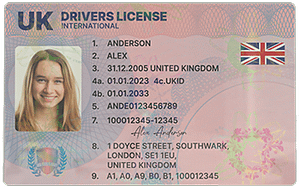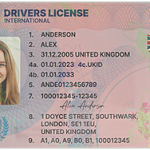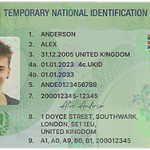In a society where identity verification is of utmost importance, fake ID card detection has become a crucial aspect. With the advancement of technology, fake ID card detection apps have emerged as a potential solution to combat the proliferation of counterfeit identification documents. These apps are designed to quickly and accurately determine the authenticity of an ID card, providing valuable assistance to various industries and individuals.
How Fake ID Card Detection Apps Work
Fake ID card detection apps typically utilize a combination of technologies. One common approach is optical character recognition (OCR). This technology scans the text on the ID card, such as the name, date – of – birth, and ID number. The app then cross – references this information with known databases or patterns of valid IDs. For example, if the ID number format is incorrect or does not match the expected algorithm for a particular issuing authority, it may flag the ID as potentially fake.
Another important technology used is image analysis. The app examines the overall quality of the ID card image, looking for signs of tampering, low – resolution printing, or irregularities in the design elements. For instance, a genuine ID card usually has high – quality printing with well – defined borders, clear logos, and consistent color gradients. Any deviation from these standards can be an indication of a fake.

Some advanced apps also incorporate machine learning algorithms. These algorithms are trained on a large dataset of both real and fake ID cards. As they analyze more and more IDs, they become better at recognizing patterns and characteristics that distinguish between authentic and counterfeit documents. This continuous learning ability allows the apps to adapt to new types of fake IDs as they emerge.
Industries Benefiting from Fake ID Card Detection Apps
One of the primary industries that can greatly benefit from these apps is the hospitality industry. Hotels, resorts, and bars often need to verify the age and identity of their guests. Fake IDs are a common problem in the bar and club scene, where underage individuals may try to gain access. With a fake ID card detection app, bouncers and staff can quickly check the authenticity of an ID, reducing the risk of serving underage patrons and potential legal issues.
The retail industry also stands to gain. In cases where age – restricted products such as alcohol, tobacco, and certain medications are sold, accurate ID verification is essential. Cashiers can use these apps to ensure that customers are of legal age, protecting the business from fines and maintaining compliance with regulations.
Transportation companies, especially those in the aviation and rail sectors, also rely on ID verification. Passengers must present valid identification to board flights or trains. Fake ID card detection apps can help security personnel quickly determine if a passenger’s ID is legitimate, enhancing overall security and preventing potential threats from individuals using false identities.
Examples of Fake ID Card Detection Apps
One well – known app in this category is IDVerify. It offers a user – friendly interface and a comprehensive set of features. IDVerify can quickly scan an ID card using the device’s camera and perform a series of checks. It compares the text on the ID with its internal database of valid ID formats and also analyzes the image for any signs of forgery. Another app, FakeIDCheck, focuses on providing real – time results. It has a fast – processing algorithm that can deliver a verdict on the authenticity of an ID within seconds. This app is popular among small businesses and individual users who need to verify IDs on the go.
Common Problems and Solutions
- Accuracy Issues:
Problem: Some fake ID card detection apps may produce false positives or false negatives. A false positive means the app wrongly flags a genuine ID as fake, while a false negative occurs when a fake ID goes undetected.
Solution: App developers need to continuously update their algorithms and databases. By incorporating more real – life data and improving the machine – learning models, the accuracy of the apps can be enhanced. Additionally, users should be trained on how to properly use the app to minimize the chances of incorrect readings.
- Compatibility Problems:
Problem: Not all fake ID card detection apps are compatible with all types of ID cards from different regions or countries. Some apps may have limited support for certain ID designs or security features.
Solution: Developers should expand their databases to include a wider range of ID card types from various issuing authorities. They can also work with international organizations and government agencies to ensure that their apps can handle the diversity of ID cards globally. For users, it is important to check the app’s compatibility before relying on it for ID verification.
- Privacy Concerns:
Problem: Since these apps often scan and analyze personal information on ID cards, there are privacy implications. Users may be worried about how their data is being stored, processed, and shared by the app.
Solution: App developers must adhere to strict privacy policies. They should clearly communicate to users how their data will be used and ensure that it is stored securely. Encryption techniques can be employed to protect the personal information scanned by the app. Additionally, users should be given the option to delete their data from the app’s servers if they wish.
- Technical Glitches:
Problem: Issues such as slow processing times, app crashes, or connectivity problems can occur, especially on older devices or in areas with poor network coverage.
Solution: App developers should optimize their apps for different devices and operating systems. They can also provide offline functionality for basic ID checks in case of network issues. Regular software updates should be released to fix any bugs or glitches that are reported by users.
- Countermeasures by Forgers:
Problem: As fake ID card detection apps become more prevalent, forgers may find ways to create fake IDs that can bypass the app’s detection mechanisms.
Solution: App developers need to stay one step ahead of forgers. They should continuously research and analyze new types of fake IDs and develop counter – countermeasures. This may involve adding new detection features, such as analyzing micro – print details or using advanced encryption techniques to verify the authenticity of the ID’s security features.



